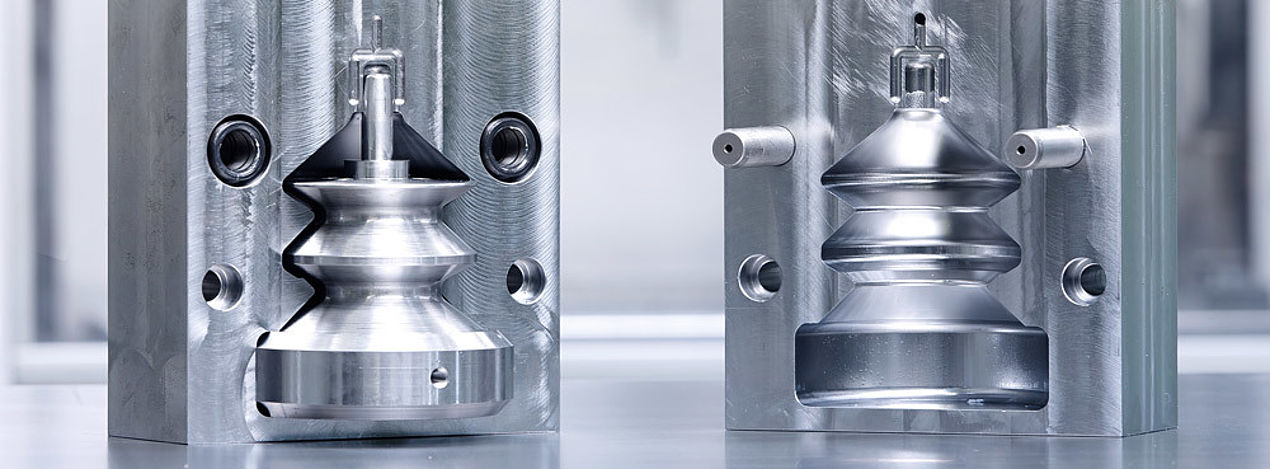Elastomer technology
Flexible right from the start
Zimmer Group produces sophisticated workpieces out of elastomers using cutting-edge production processes in its elastomer technology area where our focus is less on mass-produced products and more on sophisticated workpieces with complex geometry.
The production volume we can provide, as with the dimensions we can produce, are nearly limitless in scope; we can produce almost any volume desired, from special single-piece solutions to medium-sized small-scale production to large series production with more than 10,000 pieces. And the workpiece dimensions are just as varied, running the gamut from pinhead-sized components to workpieces with a volume of several liters.
Whether big or small: There is hardly any limit to the component complexity we can provide. We supply practically everything that can be implemented using the transfer molding (TM) or injection transfer molding (ITM process, including insert parts like threaded inserts, springs and any other parts made of plastics or metals, which we also machine on request.
In addition to the transfer molding process, where a elastomer is inserted into a mold, compressed into a shape using a press, vulcanizing it under heat and pressure, we also use the injection transfer molding process. In this process, the initial materials are pressed into the mold on an injection molding machine and vulcanized from there.
We use these two processes to process a wide range of elastomers, such as NBR, silicone, EPDM, FKM and polyurethane. We also offer all of the technically feasible variations in hardness grades, coloring and improvements to chemical, mechanical or thermal resistance for these starting elastomers.
Products produced this way are used in numerous industries, such as mechanical engineering and vehicle manufacturing, medical equipment, construction and electrical engineering.


Transfer molding process (TM)
At Zimmer, we use the transfer molding process for single component and small series production of elastomer components. This process involves inserting an uncured rubber mixture into a tool that can be heated. This mixture is cured (vulcanized) and formed into a finished elastomer component.
Injection transfer molding process (ITM)
In contrast to the normal TM process, series production of elastomer components involves subjecting the uncured rubber mixture to an automated injection process, instead of inserting it.
Materials
Nitrile rubber (NBR), silicone, fluororubber (FKM), ethylene propylene diene rubber (EPDM), and polyurethane.
Advantages of elastomer technology at ZIMMER:
- Special seals and series production seals from a single source
- Even the most complex geometries can be reproduced
- Flexibility in terms of quantities: Individual seals, small production series, and large production series can all be manufactured
- Variability in component size: Small, medium-sized, and large components can be produced
- Development of and advice on geometrical optimization in process technology
- Installation, assembly, and functionality testing

